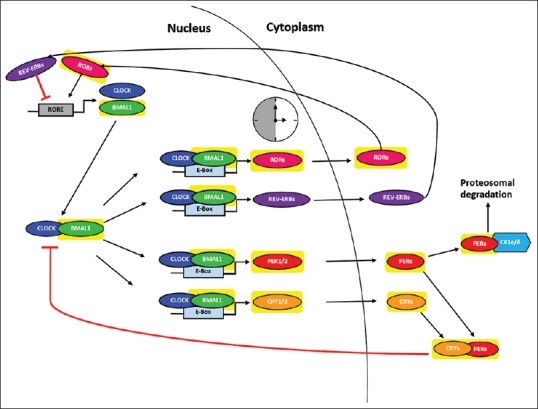Figure 1.

The transcriptional regulation circuit of clock genes in mammal. Circadian rhythm is mediated by the genes Brain muscle ARNT-like1 and circadian locomotor output cycles kaput act in a positive feedback loop to regulate expression of the transcriptional-translational feedback loop of core clock genes during late night and early morning. They form a heterodimer and binds to enhancer box elements, DNA response element with protein-binding site, within the promoter regions of Period, CRY, REV-ERB, and RORs. Period and CRY accumulate in the cytoplasm and form complexes that translocate back into the nucleus and inhibit brain muscle ARNT-like1/circadian locomotor output cycles kaput -mediated transcription during late day and nighttime. In addition, reverse-related erythroblastoma proteins exert a negative feedback by inhibiting Bmal1 transcription, while related orphan receptor proteins are positive regulators of Bmal1 transcription. Related orphan receptors compete with reverse-related erythroblastoma for related orphan receptor element binding sites of Bmal1 promoter. The genes highlighted in yellow are also involved in depression, however, the pathway that links depression and circadian rhythm disturbance is not delineated yet
